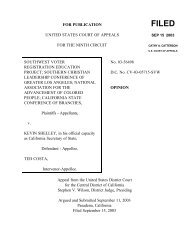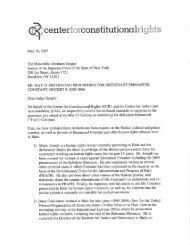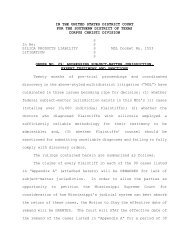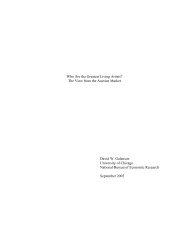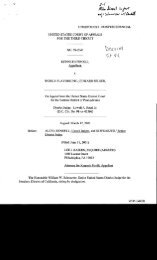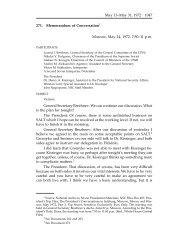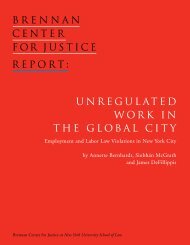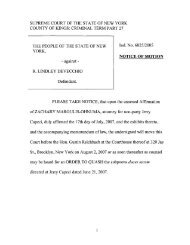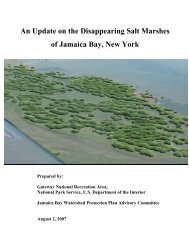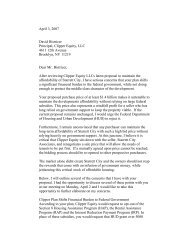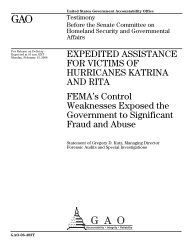UNITED STATES DISTRICT COURT SOUTHERN DISTRICT OF ...
UNITED STATES DISTRICT COURT SOUTHERN DISTRICT OF ...
UNITED STATES DISTRICT COURT SOUTHERN DISTRICT OF ...
You also want an ePaper? Increase the reach of your titles
YUMPU automatically turns print PDFs into web optimized ePapers that Google loves.
Case 1:08-cv-07837-PAC Document 51 Filed 10/31/2008 Page 11 of 26<br />
Applying those factors here, there is no indication that Congress intended the EPCA to<br />
benefit the individual vehicle owner or user. The focus of the EPCA is on regulating fuel<br />
economy standards across an entire fleet of manufacturer vehicle models. See 49 U.S.C. §<br />
32901(a)(6); see also infra Part IV(A). Nothing in the EPCA expressly grants rights to<br />
individual drivers or owners. The statute focuses on the regulated parties and does not put an<br />
emphasis on the individual. Thus, it is likely that a court would not permit Plaintiffs to recover<br />
their expected damages through a § 1983 claim.<br />
Additionally, Defendants rejected the Plaintiffs’ offer to withdraw the motion for an<br />
injunction if Defendants would stipulate to Plaintiffs’ right to damages if the 25/30 Rules are<br />
implemented and then struck down. (See Defendants’ Letter of October 17, 2008 (“Def. Oct. 17<br />
Letter”).) This suggests that the Defendants themselves do not believe that Plaintiffs have a<br />
viable damages claim.<br />
Finally, Defendants argue that Plaintiffs cannot show irreparable harm because Plaintiffs<br />
delayed until the final moment to seek injunctive relief, even though Plaintiffs knew about the<br />
impending TLC regulations for months. Defendants argue that Plaintiffs created their own harm<br />
through their delay. While a plaintiff’s failure to act promptly in seeking injunctive relief can<br />
“undercut[]” the sense of urgency and suggest that there is no irreparable injury, see Citibank,<br />
756 F.2d at 277, that is not the proper analysis here. Citibank, N.A. v. Citytrust dealt with a<br />
trademark claim, where the harm was immediately apparent upon infringement of the trademark,<br />
so there was no excuse for the filing delay. Id. at 276-77. Courts will excuse a delay, however,<br />
where “the harm largely is prospective and will arise from a discrete future event.” Million<br />
Youth March, Inc. v. Safir, 18 F. Supp. 2d 334, 340 (S.D.N.Y. 1998). Here, the harm to the<br />
Plaintiffs is in the future, and the exact amount and timing of the harm is not clear. In these<br />
11



